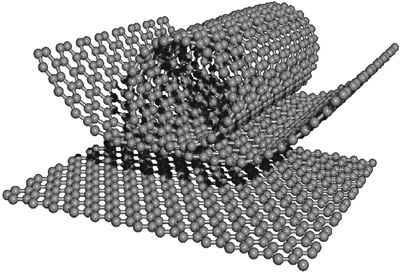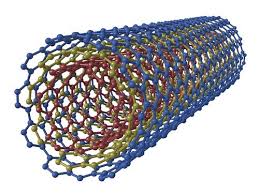(Rolled or chiral vector) of graphene layers in changing the electrical properties of nanotubes (Nano tube) PhD Nano _ Microelectronics
Researcher and author: Dr. ( Afshin Rashid)
Note: Layers of nanotubes can behave like a metal and be electrically angled. Structure and structure changes in them can display semiconductor properties. Or be non-conducting. For example, a slight change in the helix can turn a pipe from a metal to a semiconductor with a large gap.
Carbon nanotubes are hollow cylinders composed of carbon atoms in a hexagonal structure. Two common zigzag and armature structures with various geometric and behavioral characteristics are studied to evaluate the effect of structure type on changes in mechanical properties, the most important of which is the modulus of elasticity. These two widely used structures in the present study have been modeled by finite element method in Mark analyst software and the effect of changing the appearance of the carbon nanotube structure on its modulus of elasticity has been studied. The behavior of covalent bonds between carbon atoms is assumed by assuming bending elements with modulus of elasticity and a certain Poisson's ratio and applying a net tensile load to its upper surface to calculate the amount of modulus of elasticity of the structures under study. According to studies, the armature structure has a higher modulus of elasticity compared to zigzag specimens.
So that zigzag specimens always tend to increase their modulus of elasticity and reach the corresponding value corresponding to the ideal structure of the armature. The direction of rolling up (rolling or chiral vector) of graphene layers determines the change in electrical properties of nanotubes. Chirality describes the hexagonal lattice angle of a carbon nanotube. Nano seat tubes - so-called because of the shape of the seat like their edges - have the same chiral indexes and are highly desirable for their complete guidance. They are not unlike zigzag nanotubes , which may be semiconductors. Converting a 30-degree graphene sheet changes the nanotube that changes from chair to chair or zigzag or vice versa.
Researcher and author: Dr. ( Afshin Rashid)
PhD in Nano-Microelectronics





